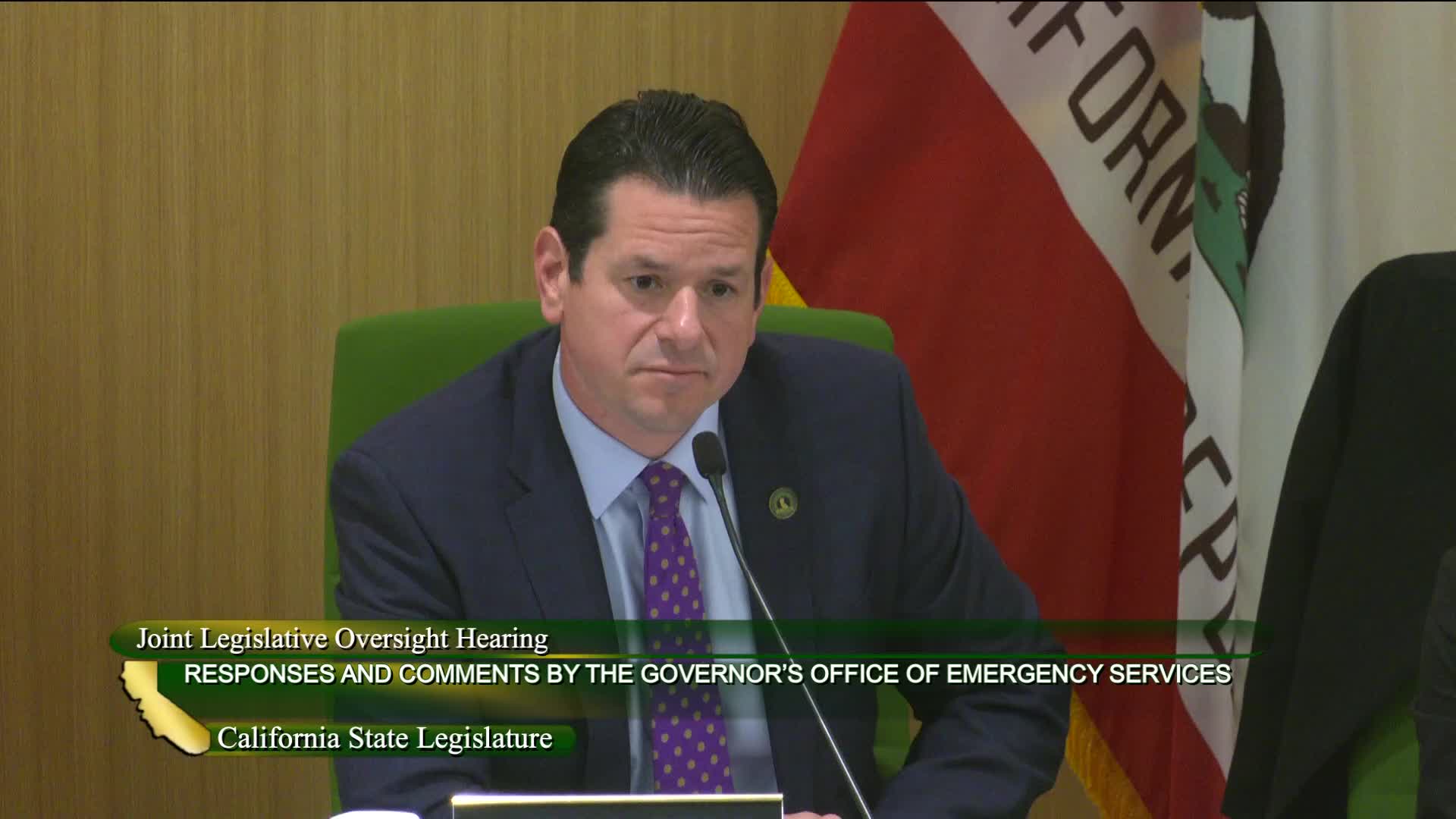California officials call for improved emergency preparedness and communication systems
March 05, 2025 | California State Senate, Senate, Legislative, California
This article was created by AI summarizing key points discussed. AI makes mistakes, so for full details and context, please refer to the video of the full meeting. Please report any errors so we can fix them. Report an error »

The Joint Hearing of the Legislative Audit Committee and the Joint Legislative Committee on Emergency Management convened on March 5, 2025, to discuss California's emergency management strategies and the effectiveness of current systems in place. The meeting highlighted significant improvements in emergency response over the past decade, yet underscored the ongoing challenges that remain.
The session began with a review of California's progress in emergency management, with officials acknowledging that while the state leads the nation in various aspects, there is still much work to be done. A key point raised was the need for enhanced collaboration among jurisdictions to ensure adequate transportation resources during emergencies. It was emphasized that no single jurisdiction possesses enough resources to meet the demands of all individuals requiring assistance during a disaster.
The discussion then shifted to the role of community-based organizations in fostering a culture of preparedness. Officials noted that many individuals, particularly those with access and functional needs, are not adequately prepared for emergencies, as evidenced by low participation in emergency alert systems and personal evacuation planning.
Concerns were raised regarding the effectiveness of emergency notifications, particularly in light of recent incidents where communities, such as Altadena, did not receive timely alerts. Questions were posed about the backup assistance provided by the California Office of Emergency Services (Cal OES) and the need for a fail-safe system to ensure that critical information reaches residents, especially when local jurisdictions falter.
The dialogue also addressed the balance between local control and state support during emergencies. It was noted that while local governments are primarily responsible for emergency management, the state must have robust systems in place to provide support when needed. The importance of testing and exercising emergency systems was highlighted to prevent failures during real events.
As the meeting progressed, the need for adaptive management in response to evolving community demographics and needs was discussed. Officials acknowledged that language barriers and changing populations can complicate emergency responses, necessitating ongoing adjustments to strategies and resources.
In conclusion, the hearing underscored the importance of continuous improvement in California's emergency management framework. While progress has been made, the discussions revealed a clear call for enhanced collaboration, preparedness, and adaptive strategies to better serve all communities in times of crisis. The committee plans to follow up on these discussions with further audits and evaluations of emergency management practices across the state.
The session began with a review of California's progress in emergency management, with officials acknowledging that while the state leads the nation in various aspects, there is still much work to be done. A key point raised was the need for enhanced collaboration among jurisdictions to ensure adequate transportation resources during emergencies. It was emphasized that no single jurisdiction possesses enough resources to meet the demands of all individuals requiring assistance during a disaster.
The discussion then shifted to the role of community-based organizations in fostering a culture of preparedness. Officials noted that many individuals, particularly those with access and functional needs, are not adequately prepared for emergencies, as evidenced by low participation in emergency alert systems and personal evacuation planning.
Concerns were raised regarding the effectiveness of emergency notifications, particularly in light of recent incidents where communities, such as Altadena, did not receive timely alerts. Questions were posed about the backup assistance provided by the California Office of Emergency Services (Cal OES) and the need for a fail-safe system to ensure that critical information reaches residents, especially when local jurisdictions falter.
The dialogue also addressed the balance between local control and state support during emergencies. It was noted that while local governments are primarily responsible for emergency management, the state must have robust systems in place to provide support when needed. The importance of testing and exercising emergency systems was highlighted to prevent failures during real events.
As the meeting progressed, the need for adaptive management in response to evolving community demographics and needs was discussed. Officials acknowledged that language barriers and changing populations can complicate emergency responses, necessitating ongoing adjustments to strategies and resources.
In conclusion, the hearing underscored the importance of continuous improvement in California's emergency management framework. While progress has been made, the discussions revealed a clear call for enhanced collaboration, preparedness, and adaptive strategies to better serve all communities in times of crisis. The committee plans to follow up on these discussions with further audits and evaluations of emergency management practices across the state.
View full meeting
This article is based on a recent meeting—watch the full video and explore the complete transcript for deeper insights into the discussion.
View full meeting
